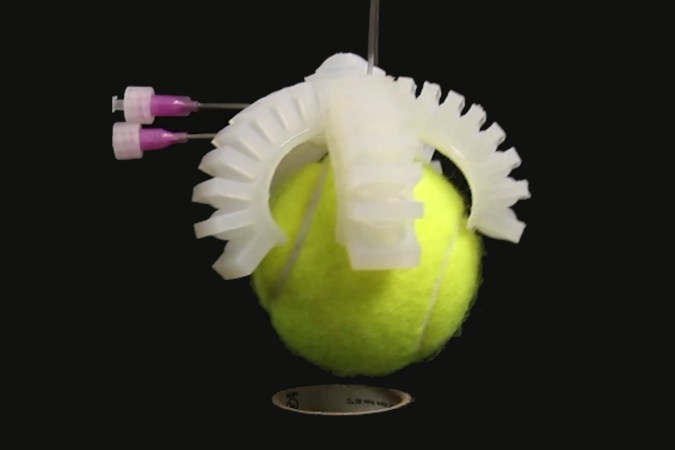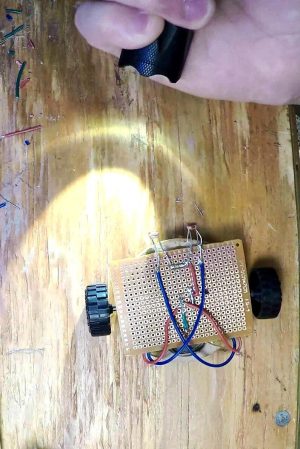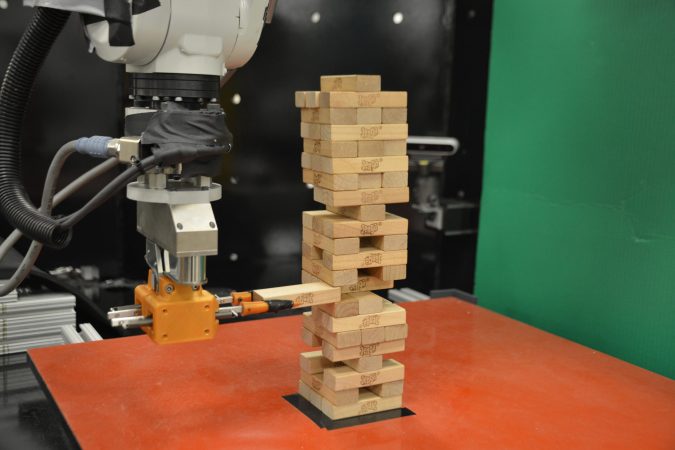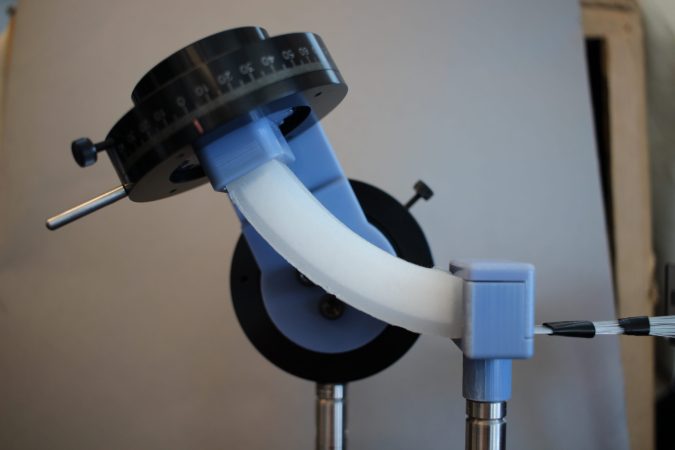
E. R. Truitt teaches in the Department of History and Sociology of Science at the University of Pennsylvania. She is the author of Medieval Robots: Mechanism, Magic, Nature, and Art (University of Pennsylvania Press), which explores the rich history of artificial people and animals between 800 and 1450. This story is excerpted from The Love Makers (Goldsmiths Press) and originally featured on MIT Press Reader.
Robots have histories that extend far back into the past. Artificial servants, autonomous killing machines, surveillance systems, and sex robots all find expression from the human imagination in works and contexts beyond Ovid (43 BCE to 17 CE) and the story of Pygmalion in cultures across Eurasia and North Africa. This long history of our human-machine relationships also reminds us that our aspirations, fears, and fantasies about emergent technologies are not new, even as the circumstances in which they appear differ widely. Situating these objects, and the desires that create them, within deeper and broader contexts of time and space reveals continuities and divergences that, in turn, provide opportunities to critique and question contemporary ideas and desires about robots and artificial intelligence (AI).
As early as 3,000 years ago we encounter interest in intelligent machines and AI that perform different servile functions. In the works of Homer (c. eighth century BCE) we find Hephaestus, the Greek god of smithing and craft, using automatic bellows to execute simple, repetitive labor. Golden handmaidens, endowed with characteristics of movement, perception, judgment, and speech, assist him in his work. In his “Odyssey,” Homer recounts how the ships of the Phaeacians perfectly obey their human captains, detecting and avoiding obstacles or threats, and moving “at the speed of thought.” Several centuries later, around 400 BCE, we meet Talos, the giant bronze sentry, created by Hephaestus, that patrolled the shores of Crete. These examples from the ancient world all have in common their subservient role; they exist to serve the desires of other, more powerful beings—either gods or humans—and even if they have sentience, they lack autonomy. Thousands of years before Karel Čapek introduced the term “robot” to refer to artificial slaves, we find them in Homer.
Given the prevalence of intelligent artificial objects in Hellenic culture, it is no surprise that engineers in the later Hellenistic period turned to designing and building these machines. Mathematicians and engineers based in Alexandria began writing treatises on automaton-making and engineering around the third century BCE. These included instructions for how to make elaborate dioramas with moving figures, musical automata, mechanical servants, and automata powered by steam, water, air, and mechanics. Some of these devices were intended to illustrate the physical principles animating them, and others were scaled up and incorporated into public spectacle. Regardless of size, they were intended to evoke a network of emotional responses, including wonder and awe.
Robots were so prevalent in the imaginative and material culture of the Greek-speaking world that they were seen as emblematic of Hellenistic culture by others. Buddhist legends focused on north-eastern India from the fourth and third centuries BCE recount the army of automata that guarded Buddha’s relics, built with knowledge smuggled from the Graecophone world. In one version, which features both killer robot-assassins and robot-guardians, a young man travels in disguise to the land of the Yavanas (Greek speakers) to learn the art of automaton-making, a secret closely guarded by the yantakaras (automaton makers) there, knowledge that he then steals to make the artificial guards. We find stories of automatic warriors guarding the Buddha’s relics in Chinese, Sanskrit, Hindu, and Tibetan texts. Additionally, mechanical automata also appear elsewhere in the Chinese historical record: for example, at the court of Tang ruler Empress Wu Zhou (c.624–705 CE).
The trope of the guardian/killer automaton also appears linked to stories about the ancient world from medieval Latin Christendom — where, unlike much of the rest of Eurasia, people lacked the knowledge of how to make complex machines. In an Old French version of the Aeneid (c.1160 CE), a golden robot-archer stands sentry over the tomb of a fallen warrior queen, and in the history of Alexander the Great (c.1180 CE), the ruler encounters golden killer robots guarding a bridge in India and armed copper robots protecting the tomb of “the emir of Babylon.” Hellenistic handbooks on automaton-making, translated into Arabic in the ninth century CE at the Abbasid court in Baghdad, also influenced the design and construction of automata in Islamdom that were usually placed in palaces and mosques, and included musician-automata, programmable clocks and fountains, and mechanical animals. These makers in Islamdom innovated on the designs of the Alexandrian School and created increasingly complex machines; although some of the objects hearken back to much older forms. In the work of courtier and engineer al-Jazari (1136–1206 CE), for example, we find designs for wheeled cupbearers and servants, an echo of the wheeled servants attending to the gods on Mount Olympus.
These perfect servants never make a mistake and they cannot be suborned. They embody a fantasy of total control, perfect obedience, and absolute power.
Al-Jazari’s courtly mechanical servants and the killer sentries in imaginative literature share a link to surveillance, foreshadowing another purpose to which AI and robots have often been turned. Sentries and guards keep watch and discern friend from foe, while courtly servants operate in ritualized, hierarchical environments where people are under constant scrutiny. Objects like those of al-Jazari’s designs were found throughout Islamdom and the eastern Roman Empire, but were unable to be built or reproduced in the Latin Christian West until the late 13th century. However, they appear earlier in imaginative texts as luxury objects, in elite settings, as fantasies of perfect surveillance and perfectly obedient servants.
The Roman poet Virgil was said to have designed a series of animated wooden statues, each representing a province of the Roman Empire, and holding a bell that would ring if the province threatened revolt. A bronze horseman pointed toward the direction of the threat. In the Old French “Roman de Troie”(The history of Troy), we find six golden automata, including four androids that patrol and surveil the entire Trojan court for any lapses in dress, manner, speech, and even thought, while also providing entertainment. Courtiers could relax, knowing they would not inadvertently commit a faux pas and nor would anyone else, and the rulers could relax, knowing that none of their courtiers were spreading misinformation or plotting against them. Philip II ‘The Good’, Duke of Burgundy (1396–1467; r. 1419–67) used some of his enormous wealth to install numerous automata, trick fountains, and other mechanical devices at his castle of Hesdin, in Artois (now northern France). Guests found themselves tested in a long gallery that was filled with automata and other devices that soaked people with water and covered them with dirt and flour, beat them with sticks, and called them names, while the duke or his proxies observed unseen.

Trick fountains and jets designed “to wet the ladies from below” were installed at the duke’s direction, and personally operated under his eye. This combination of sex and surveillance was well established in medieval Latinate culture by the 15th century. In addition to the imperial alarm system already mentioned, Virgil was also credited with making the “Mouth of Truth” (bocca della verità), a marvel that could determine a woman’s sexual history, and would bite off her fingers if she were not chaste. Sexual surveillance of women, linked to concerns about maintaining the distinction of noble blood, appears throughout medieval literature, and there is at least one example featuring an artificial musician that announced to every visitor—via music—whether or not the woman entering was a virgin. Ultimately, these fantastical objects reveal a preoccupation with women’s sexual behavior, a belief that this behavior is meaningful and must be controlled, and an inability to treat women as autonomous, fully human beings.
Female sex robots, or artificial sex partners, are equally prevalent in tales from multiple ancient cultures as robocops and perfect servants. One of the most well-known examples of this trope is the story of Pygmalion, although in that story his sculpted creation, Galatea, only becomes alive through divine intervention — Venus grants Pygmalion’s wish while he is carnally engaged with his creation. The story of Pygmalion was glossed and retold in medieval Latin culture, sometimes with surprising inversions. In one version of the story of the doomed lovers, when Tristan is separated from his beloved Isolde, he substitutes her with a golden copy, which he uses as a proxy, confiding in it and kissing it. In one Buddhist tale that appears in multiple versions, an automaton maker creates an artificial serving girl who fools a visiting artist into thinking it is human, so he has violent intercourse with it, destroying it in the process. Technology for erotic titillation appears in Sanskrit texts from the 10th and 11th centuries CE that describe the automata in the courts of north-western India, such as female attendants that expressed perfumed water from their nipples and navels.
In the stories of both Pygmalion and Tristan, their insistence on mistaking the artificial for the natural is presented as evidence of their derangement — how could any person in their right mind mistake something made for something born? In some instances, extreme mimesis of biological characteristics highlights the desire for a perfect copy, indistinguishable from the born original. The golden automaton that substituted for Isolde mimicked human biology by exhaling perfumed air that originated from its chest, reflecting contemporary physiological theory which held that the heart was central to respiration and to producing spiritus, a substance that was vital to sustaining life. This is an early example of preoccupation with biological lifelikeness in sex robots, and conceptually similar to later inventions in 18th- and 19th-century Europe — the sexual automata, or “gladdeners,” which mimicked female genitalia and the ability to simulate natural secretions. Yet, at the same time, the emphasis on extreme mimesis highlights the artifice of the robot, how it is emphatically not-born. That the robot signifies both indicates its status as a border object: something that highlights boundaries by traversing them.
Robots and AI have long been used both to foreground and to trouble the conceptual boundary between born and made, and the related boundary between life and not-life. Yet the contexts in which these stories appear supply different meanings to the same story. In the early Taoist text “The Book of Liezi”(compiled circa fourth century), the skill of the artificer is appreciated by the king and his court, but in other stories about learned men and their automaton-children, such as those attached to Albertus Magnus in the 14th and 15th centuries, and to René Descartes in the 18th and 19th centuries, the robot is destroyed by ignorant people out of fear. In E. T. A. Hoffman’s version of this tale, “The Sandman” (1816), the inability to distinguish made from born drives the protagonist, Nathanael, insane and, eventually, to his death.
These implacable sentries and imperial and courtly surveillance robots and AIs are theoretically superior to the human beings who would otherwise be entrusted with these tasks. These perfect servants never make a mistake and they cannot be suborned (although they can sometimes be overcome). They never tire. They do not complain of ill treatment, agitate for freedoms or better conditions, and they don’t get ideas above their station. They embody a fantasy of total control, perfect obedience, and absolute power.
Robots and AI have long been used or imagined as tools to serve the powerful few, so it is worth challenging assertions that automation and AI are innovations, and that they will positively transform human society.
The objects and preoccupations under discussion here have long, complex histories that reveal some striking similarities across culture, time, and space. Robots and AI in fact and in fiction serve the interests of powerful elites, often by violently policing boundaries (of places and social groups) and surveilling subject populations. They act as liminal objects, and are often used in imaginative texts to think about and interrogate boundaries between natural and artificial, between living and not. Intelligent machines raise issues of autonomy and consent. And they appear in the context of fantasies about subjectivity and creation, posing philosophical questions about the ethics of making and what we owe to what we create.
Robots and AI have long been used or imagined as tools to serve the powerful few, so it is worth challenging assertions that automation and AI are innovations, and that they will positively transform human society. These objects are not new and no technology is revolutionary or transformative if it is used to consolidate and strengthen the interests of those already in power. However, a deeper engagement with historical material offers the possibility of thinking differently about our robotic future, as similarity and strangeness reveal themselves in configurations that conjure new perspectives. Older histories of AI make it possible to reimagine ideas of what these objects should look like, how they might interact with us, and how they might be used to liberate the disempowered. Greater understanding of those histories and contexts can offer new perspectives and possibilities for imagining and making robots and AI now and in the future.















